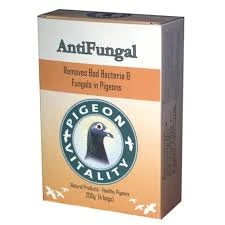
Nov . 24, 2024 18:02 Back to list
Mycoplasma Pneumonia Impact on Cattle Health in Farming Operations
Mycoplasma Pneumonia in Cattle Factories An Overview
Mycoplasma pneumonia is a significant respiratory disease affecting cattle, particularly in intensive farming settings often referred to as cattle factories. Mycoplasmas are a unique group of bacteria that lack a cell wall, making them distinct from conventional bacterial pathogens. While there are various mycoplasma species, Mycoplasma bovis is the primary organism responsible for pneumonia in cattle. This article explores the causes, symptoms, prevention, and control measures regarding mycoplasma pneumonia in cattle production facilities.
Causes of Mycoplasma Pneumonia
Mycoplasma pneumonia in cattle typically arises from various environmental and physiological stressors. Intensive farming systems often present conditions conducive to the spread of infection, such as high animal density, poor ventilation, and other stress factors that may compromise the immune system of the cattle. Transmission occurs through direct contact between animals or through inhalation of aerosolized pathogens from infected individuals.
Cattle are particularly susceptible to this disease at a young age, especially during weaning and transportation—times when stress levels are elevated. Factors such as concurrent viral infections—like bovine respiratory syncytial virus (BRSV) and infectious bovine rhinotracheitis (IBR)—can exacerbate the severity of mycoplasma pneumonia.
Symptoms
The clinical signs of mycoplasma pneumonia in cattle can vary significantly, often overlapping with other respiratory diseases. Common symptoms include
1. Coughing A persistent cough is one of the hallmark signs and may worsen with time. 2. Nasal Discharge Infected cattle often exhibit clear or purulent nasal secretions. 3. Labored Breathing As the disease progresses, respiratory distress may occur, characterized by shallow, rapid breaths. 4. Fever A rise in body temperature is a common indicator of infection. 5. Reduced Appetite Infected animals may eat less, leading to weight loss and poor growth performance.
The chronic nature of mycoplasma infections can lead to long-term health issues, including decreased milk production, poor weight gain, and increased susceptibility to other health problems.
Prevention and Control
mycoplasma pneumonia in cattle factories

Preventing mycoplasma pneumonia requires a multifaceted approach that emphasizes good management practices in cattle factories
. Here are some key strategies1. Biosecurity Measures Implement strict biosecurity protocols to minimize the introduction and spread of pathogens. This includes controlling access to barns, isolating new animals, and thorough sanitation of equipment and housing.
2. Ventilation Ensuring proper airflow within barns can significantly reduce pathogen load. Good ventilation helps to decrease humidity and ammonia levels, which are conducive to respiratory diseases.
3. Vaccination Although there are no specific vaccines targeting Mycoplasma bovis, vaccination against viral pathogens that predispose cattle to bacterial infections can help reduce the risk of pneumonia.
4. Nutrition Providing a balanced diet that meets the nutritional needs of cattle can enhance their immune response and overall health, reducing the risks associated with stress factors.
5. Monitoring and Early Detection Regular health checks and monitoring for early signs of respiratory distress can aid in prompt intervention. Isolating and treating infected animals can help control outbreaks.
6. Antibiotic Treatment In cases of confirmed mycoplasma pneumonia, appropriate antibiotic therapy may be necessary. However, the efficacy of antibiotics can be limited due to the unique structure of mycoplasmas, which lack a cell wall. Therefore, reliance solely on antibiotics is not advisable without implementing broader management strategies.
Conclusion
Mycoplasma pneumonia poses a considerable challenge for cattle producers in intensive farming settings. Understanding the causes, symptoms, and effective prevention strategies is crucial for maintaining cattle health and optimizing production. By adopting sound management practices and implementing robust biosecurity measures, cattle factories can mitigate the risks associated with mycoplasma pneumonia and ensure the well-being of their livestock. As the agricultural landscape continues to evolve, ongoing research and education will be vital in combating this significant pathogen and safeguarding cattle health.
-
China Broiler Sudden Death Syndrome Solutions Supplier
NewsJul.26,2025
-
Copper Sulfate for Pond Factory - Reliable Manufacturer & Supplier Solutions
NewsJul.25,2025
-
High-Quality Scabies Mites from China | Custom Solutions & Bulk Supply
NewsJul.24,2025
-
Acute Salpingitis and Oophoritis Factory - Leading Manufacturer & Supplier
NewsJul.23,2025
-
Premium Coccidia Supplier from China – Custom Solutions & Factory Price
NewsJul.22,2025
-
Amoxicillin for Rats Factories | Manufacturer & Supplier
NewsJul.22,2025




